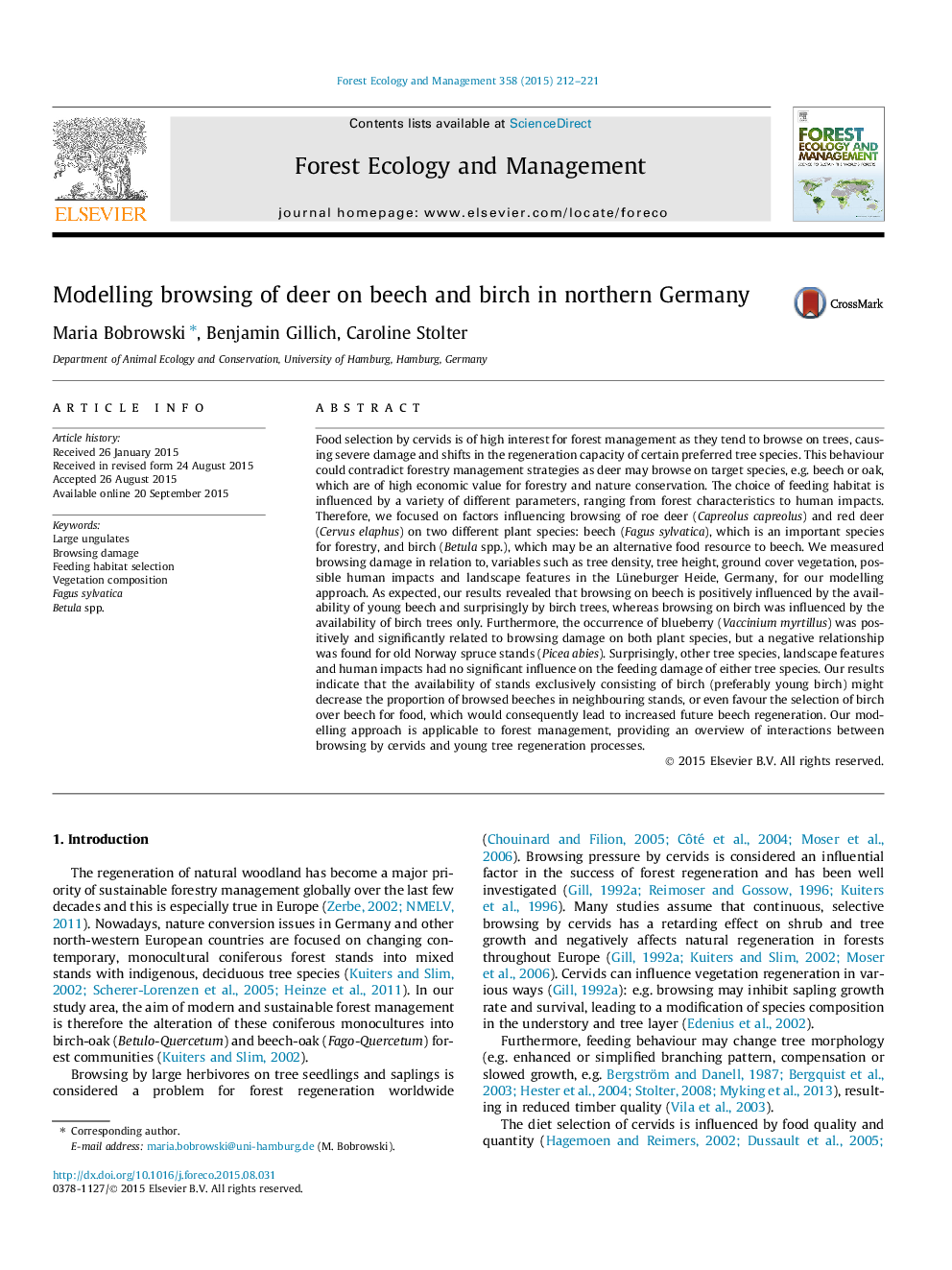| کد مقاله | کد نشریه | سال انتشار | مقاله انگلیسی | نسخه تمام متن |
|---|---|---|---|---|
| 86073 | 159163 | 2015 | 10 صفحه PDF | دانلود رایگان |
• Analysis of factors influencing the browsing of deer on beech and birch.
• Variables were vegetation characteristics, geographical features and human impact.
• For browsing, tree characteristics and vegetation composition were most important.
• Geographical features and human impact were less important.
• Improving growth conditions for birch might lead to a reduction of damage on beech.
Food selection by cervids is of high interest for forest management as they tend to browse on trees, causing severe damage and shifts in the regeneration capacity of certain preferred tree species. This behaviour could contradict forestry management strategies as deer may browse on target species, e.g. beech or oak, which are of high economic value for forestry and nature conservation. The choice of feeding habitat is influenced by a variety of different parameters, ranging from forest characteristics to human impacts. Therefore, we focused on factors influencing browsing of roe deer (Capreolus capreolus) and red deer (Cervus elaphus) on two different plant species: beech (Fagus sylvatica), which is an important species for forestry, and birch (Betula spp.), which may be an alternative food resource to beech. We measured browsing damage in relation to, variables such as tree density, tree height, ground cover vegetation, possible human impacts and landscape features in the Lüneburger Heide, Germany, for our modelling approach. As expected, our results revealed that browsing on beech is positively influenced by the availability of young beech and surprisingly by birch trees, whereas browsing on birch was influenced by the availability of birch trees only. Furthermore, the occurrence of blueberry (Vaccinium myrtillus) was positively and significantly related to browsing damage on both plant species, but a negative relationship was found for old Norway spruce stands (Picea abies). Surprisingly, other tree species, landscape features and human impacts had no significant influence on the feeding damage of either tree species. Our results indicate that the availability of stands exclusively consisting of birch (preferably young birch) might decrease the proportion of browsed beeches in neighbouring stands, or even favour the selection of birch over beech for food, which would consequently lead to increased future beech regeneration. Our modelling approach is applicable to forest management, providing an overview of interactions between browsing by cervids and young tree regeneration processes.
Journal: Forest Ecology and Management - Volume 358, 15 December 2015, Pages 212–221
